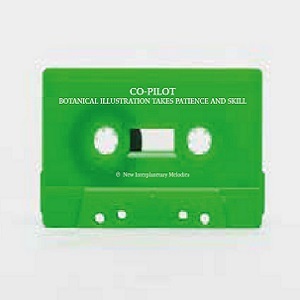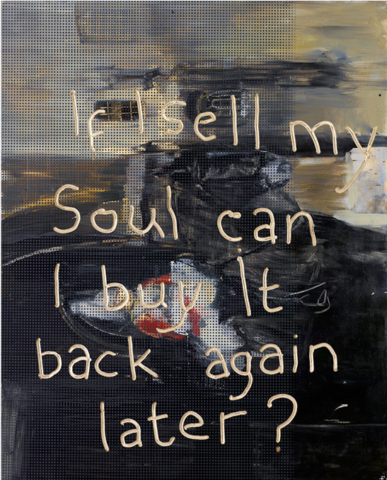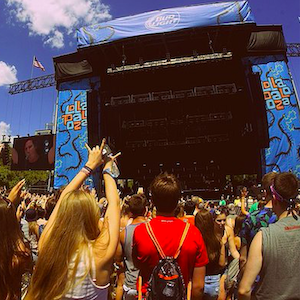Remixing Genre
By Rebecca Blakeston
What do you think of when classical music is mentioned and what comes to mind when you consider electronic music? It may be that you make rather specific associations. Maybe neither interest you at all; you think you’ve made up your mind. Perhaps classical is the background noise of stuffy intellectual types’ studies or well-to-do crowds sitting intently in front of an orchestra seeming ever so cultured and highbrow. These stereotypes don’t exist for no reason but they are certainly not a reflection of classical music’s wider appeal. Similarly, one’s view of electronic music may be rather blinkered. Maybe it’s images of rave-goers, jaws swinging and pupils dilated. Or not dissimilar festival attendees, hyped up on warm beer and bass so heavy you feel it rattle your bones. Again, these images spring to mind for good reason but don’t truly reflect electronic music on the whole. These genres may seem disparate at a glance but look further and you’ll see this isn’t always the case. Find out more here in Remixing Genre.
Image on the left by Josep Molina Secall
Nobody would blame you for thinking of electronic music as an innovation of the late 20th century but, in reality, as far back as the 1940s the traditional hardware of classical instruments has been combined with electronic innovation with Daphne Oram’s composition Still Point, which was recorded live, being credited by many as the first to combine acoustic orchestration with live electronic manipulation.
Oram began her career as a junior studio engineer for the BBC in 1942. It is in this environment that she began experimenting with tape recorders and the notion of ‘synthetic sound’ and, in the aftermath of Still Point’s composition, would be promoted. From this success, she and fellow composer and electronic musician Desmond Briscoe would create the deeply influential and innovative BBC Radiophonic Workshop in 1958.
It is worth noting the significance of her position as a woman in the 1940s and 1950s and the level of rarity for a woman to be permitted to make such breakthroughs and innovations without the responsibility and credit instead being handed to a man.
Daphne Oram, Still Point, 1948
Oram continued to have a prolific career working for the BBC and then creating her own studio dedicated to Oramics, a sound technique of her creation, in which she produced music for television, radio, theatre, commercials and installations.
Aside from her own work, another piece of her legacy is paving the way via the BBC Radiophonic Workshop for fellow pioneer of electronic music Delia Derbyshire, who arrived at the BBC in 1960 and went on to be the co-creator of the original theme music for the iconic British sci-fi programme Doctor Who.
How Delia Derbyshire Made the Doctor Who Theme, Tomorrow’s World, Music, BBC Archive, 1965
The beginnings of electronic music’s growth and the innovation that came with it on a mainstream scale could be put down to the launch of the Moog, the first commercially available synthesiser.
Moog synthesisers prompted creativity as early as the 1960s and merging of the classical and electronic genres became more accessible. A great example of this can be seen in Switched-On Bach, a 1968 album of Bach compositions arranged for the synthesiser by musician, composer and producer Wendy Carlos. The album was an unexpected critical and commercial hit, proving that and audience did exist for this kind of innovative, genre-merging music.
So the crossover between classical and electronic music, remixing genre as a concept, isn’t a new idea. But it is one that is increasing in popularity over recent years. Taking orchestral instruments, hardware, and manipulating them through computer software, results in work that simultaneously utilises the differences and similarities between these genres.
A particularly strong example of this comes in the form of Belgian-born musician and producer Apashe. With over two million monthly listeners on Spotify, his discography which spans back to 2013 clearly appeals to modern audiences. He describes his sound as ‘majestic’ and has worked with real orchestras to achieve an organic, soulful sound.
“I try to copy traditional classical music from centuries ago but using the newest technology possible.”
Apashe
Apashe’s influences are largely from outside the electronic genre with two artists he credits being Danny Elfman and Hans Zimmer. This cinematic feel comes across in his own compositions and he has stated he also find inspiration in film scenes he imagines in his head.
Apache, Renaissance 2.0 With Live Orchestra, 2021
The merging of classical and electronic music is also set to make appearances at various events around London this summer.
Cheltenham Music Festival, which runs from the 8th July to 15th July will feature late-night solo performances by both Rakhi Singh, using violin and electronics, and Laura Cannell, using recorder and electronics.
Rakhi Singh, Improv. into Alia Fantasia by Nicola Matteis, Live in the QEH, 2022
Barbican Sessions: Laura Cannell, 2018
There will also be a concert as a result of collaboration between electronic composer and performer Anna Meredith and the Scottish Ensemble as well as an AV installation curated by Hannah Conway.
Running from the 17th June all the way to December, there is also a programme of events hosted by Kings Place entitled Sound Unwrapped.
Amongst these events are further opportunities to see performances by Rakhi Singh and Laura Cannell along with London Sinfonietta, pianist and technologist Zubin Kanga, turntablist Shiva Feshareki and guitarist Sean Shine.
Zubin Kanga, Live at Classical:NEXT, 2022
Shiva Feshareki, Venus/Zohreh, 2022
From 1940s origins to the present day, it is clear that the merging of two complex musical genres has the ability to captivate listeners and encourage constant innovation in both live and recorded music. When the hardware of classical instruments we know and appreciate meets the software that can distort, enhance and rearrange their sounds, a whole new understanding of how a composition can come together is created.
Below are lists of electronic/classical performances happening at both the Cheltenham Music Festival and Sound Unwrapped.
Cheltenham Music Festival
| Event | Programme |
| Rakhi Singh (14 July, 9:30pm) Late-night set | Music by Alex Groves, Emily Hall, Edmund Finnis, Nicola Matteis and Bang on a Can’s Michael Gordon and Julia Wolfe |
| Laura Cannell: Antiphony of the Trees (8 July, 9:30pm) Late-night set | Music taken from Laura’s album Antiphony of the Trees (2022):1.For the Ravens 02:112.For the Gatherers 02:223.For the Sacred Birds 03:594.For the Hoarders 03:015.We Borrowed Feathers 03:326.For the Mythos of Birds 02:597.Antiphony of the Trees 03:418.Hidden in the Marsh Thistle 03:349.The Girl Who Became an Owl 02:5210.For the Honey Buzzard 01:3211.Awake From Your Feathered Slumber 03:16 |
| Scottish Ensemble: ANNO (15 July, 7:30pm) Concert performance | Astor Piazzolla ‘Primavera Porteña’ from Four Seasons of Buenos AiresCaroline Shaw ‘Moss’ from The EvergreenJessie Montgomery Starburst Caroline Shaw ‘Stem’ from The EvergreenPiotr Ilyich Tchaikovsky (arr. D Matthews) ‘Autumn Song’ from The SeasonsFredrik Sjölin Shore Trad. Swedish (arr. Danish String Quartet) Polska from DorotheaJoanna Marsh (arr. J Azkoul) In Winter’s House Anna Meredith ANNO |
| Sound Voice(throughout the Festival, 8-15 July, hourly from 10am-8pm) AV installation | Duration: 30 minutes An award-winning collaboration between professional musicians and individuals who have faced voice loss. A powerful audio-visual experience combining reflective and hopeful songs with delicate visuals, it tells their stories and examines the relationship between voice and identity. |
Sound Unwrapped
| Event | Programme |
| Rakhi Singh (10 June, 8pm) | Music by Alex Groves, Emily Hall, Edmund Finnis, Nicola Matteis and Bang on a Can’s Michael Gordon and Julia Wolfe |
| Laura Cannell: Antiphony of the Trees (17 June 8pm) | Music taken from Laura’s album Antiphony of the Trees (2022):1.For the Ravens 02:112.For the Gatherers 02:223.For the Sacred Birds 03:594.For the Hoarders 03:015.We Borrowed Feathers 03:326.For the Mythos of Birds 02:597.Antiphony of the Trees 03:418.Hidden in the Marsh Thistle 03:349.The Girl Who Became an Owl 02:5210.For the Honey Buzzard 01:3211.Awake From Your Feathered Slumber 03:16 |
| London Sinfonietta, Turning Points (24 June, 7.30pm) | Jonathan Harvey Ricercare una Melodia (solo instrument + tape) Kaija Saariaho NoaNoa (solo flute + electronics) Luciano Berio Naturale (viola, percussion + tape) David Fennessy The Room is the Resonator (solo cello + live electronics) Dai Fujikura K’s Ocean (solo trombone and live electronics) Ailis ni Rian doomed, done for, damned, and still (solo cello and tape) Christian Mason I wandered for a while (spatialised piccolo, cello, piano, bells + electronics) |
| Zubin Kanga with Shiva Feshareki, Cyborg Soloists (30 September, 8pm) | Works by Shiva Feshareki, Laura Bowler, Emily Howard, Oliver Leith, Laurence Osborn and Zubin Kanga |
| Shiva Feshareki & Sean Shibe (2 December, 8pm) | Shiva Feshareki Live turntable manifestations of Opus Infinity Steve Reich Electric Counterpoint Julius Eastman Bhudda Shiva Feshareki Seismic Wave Orchestra (UK premiere) |
More information on Cheltenham Music Festival can be found Here
More information on Sound Unwrapped can be found Here
If you enjoyed reading Remixing Genre, why not try Music Meets Nature
.Cent magazine London, Be Inspired; Get Involved.





